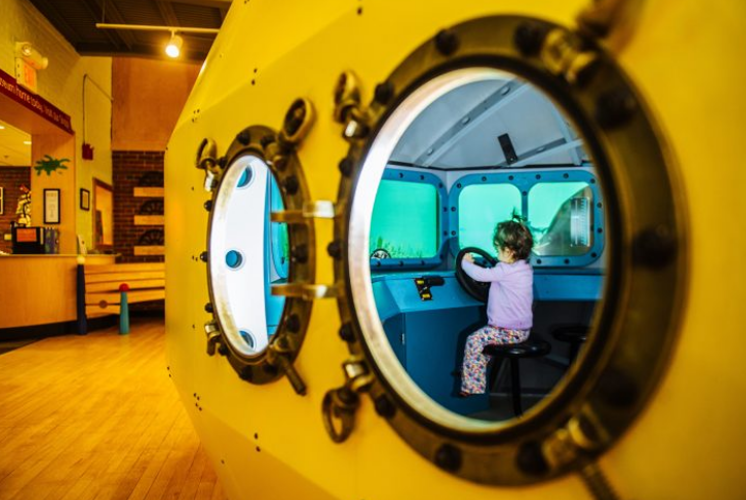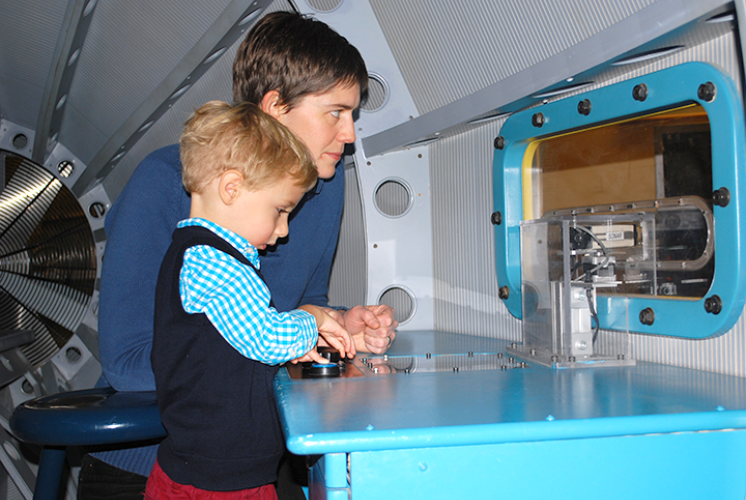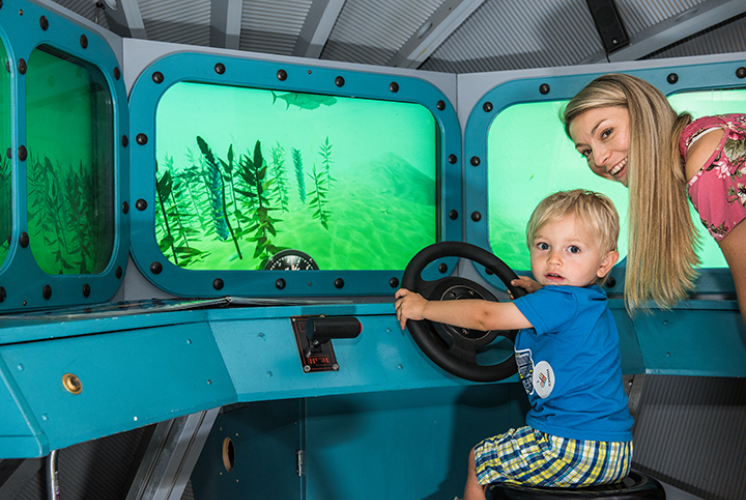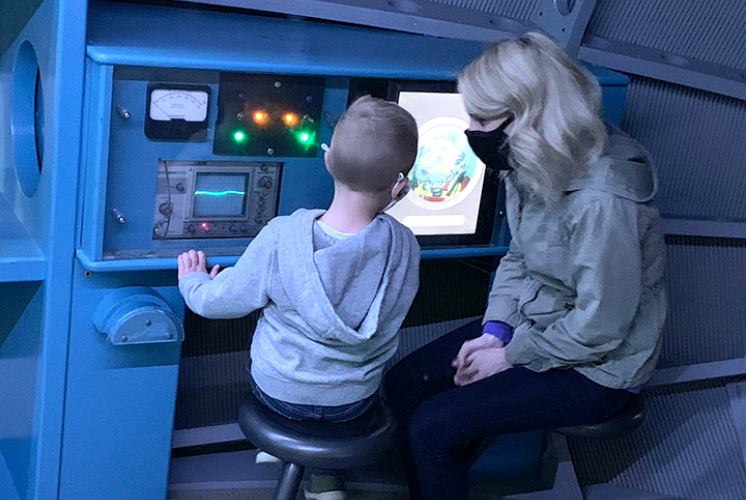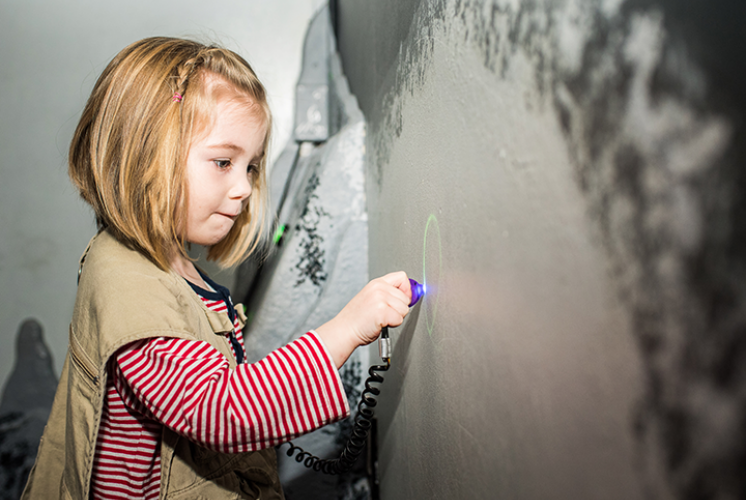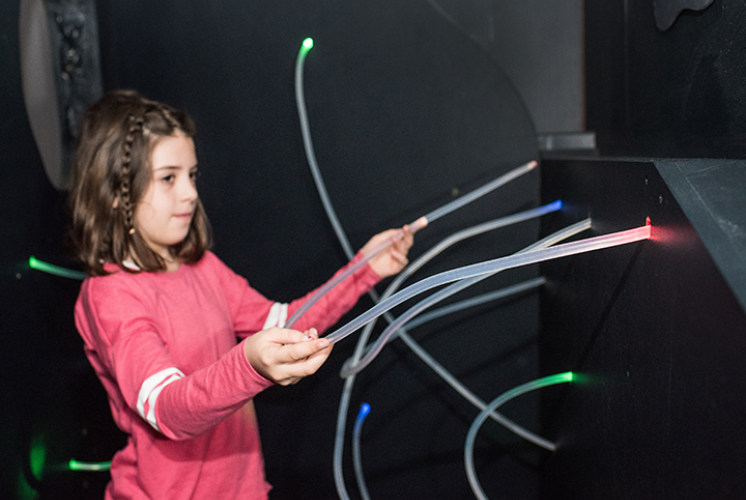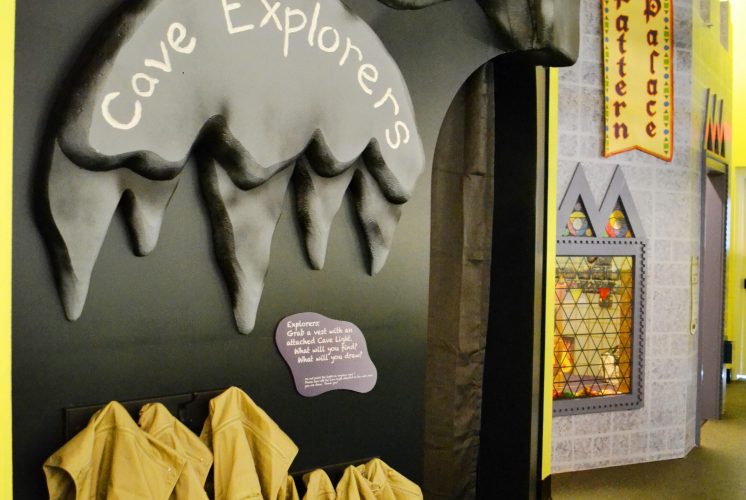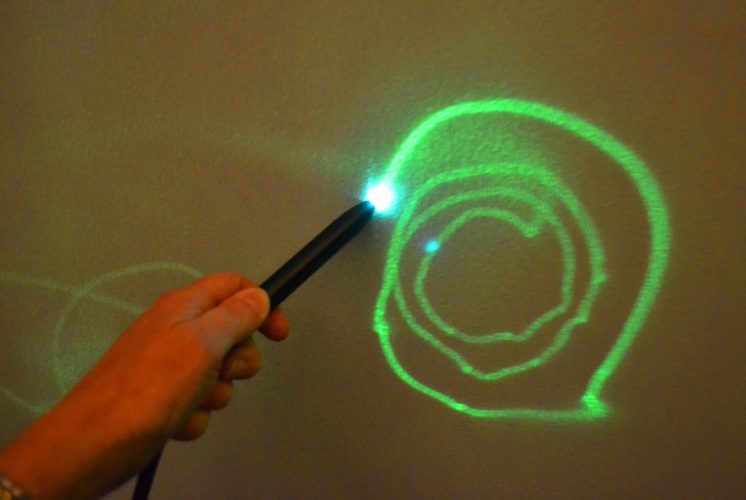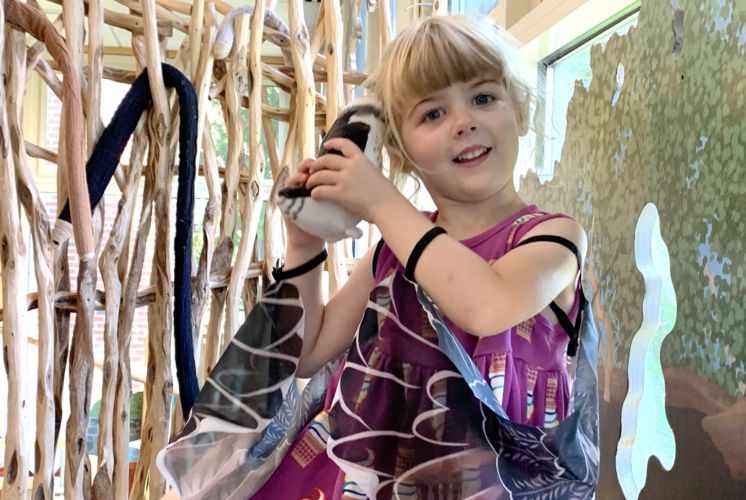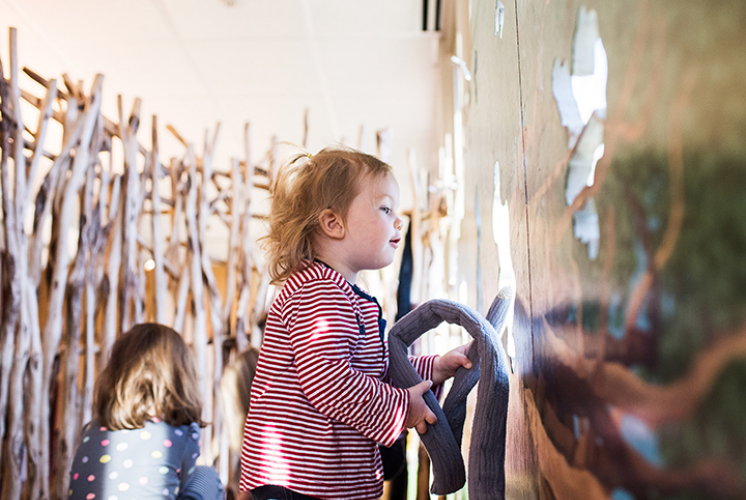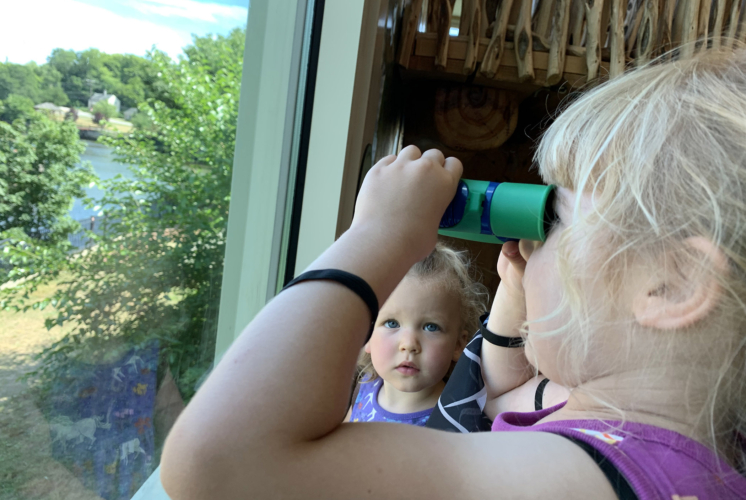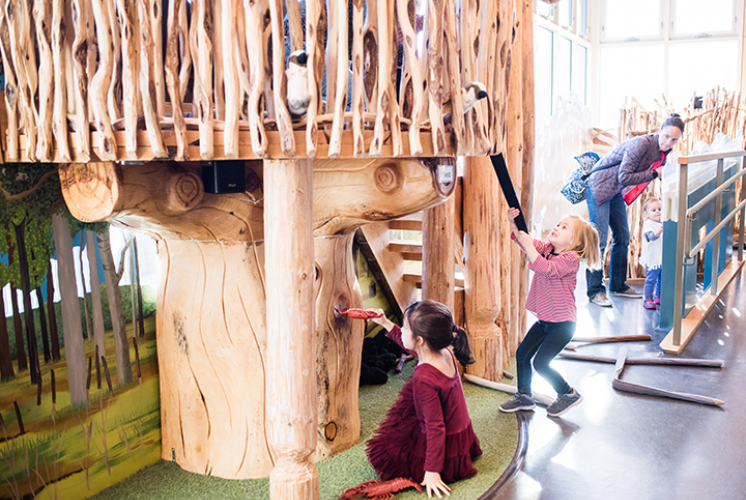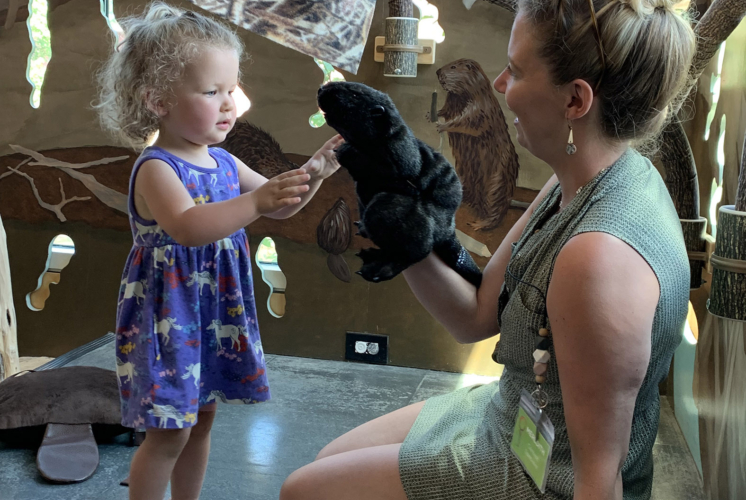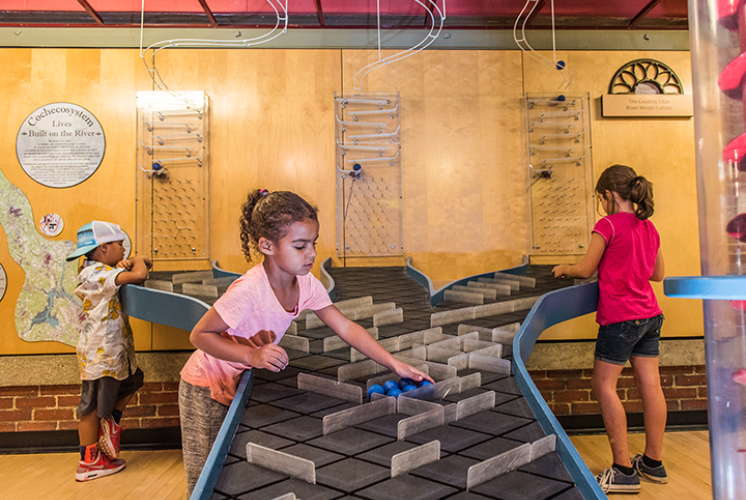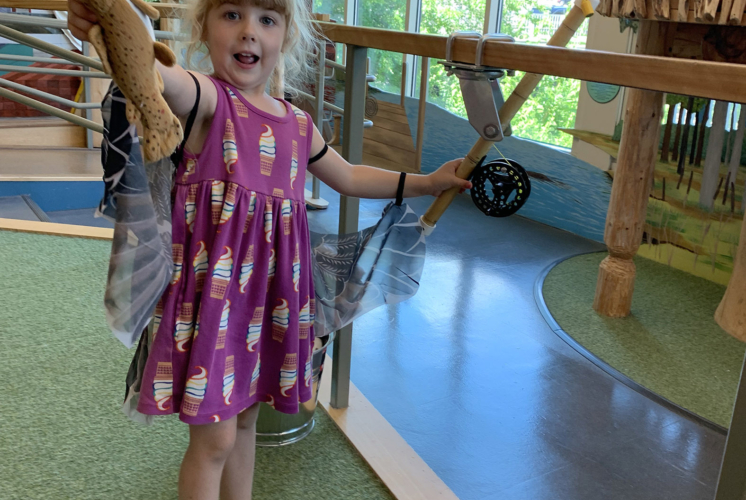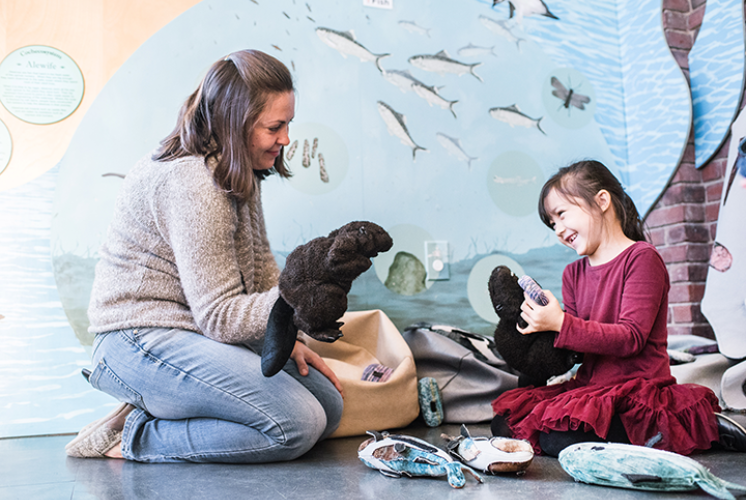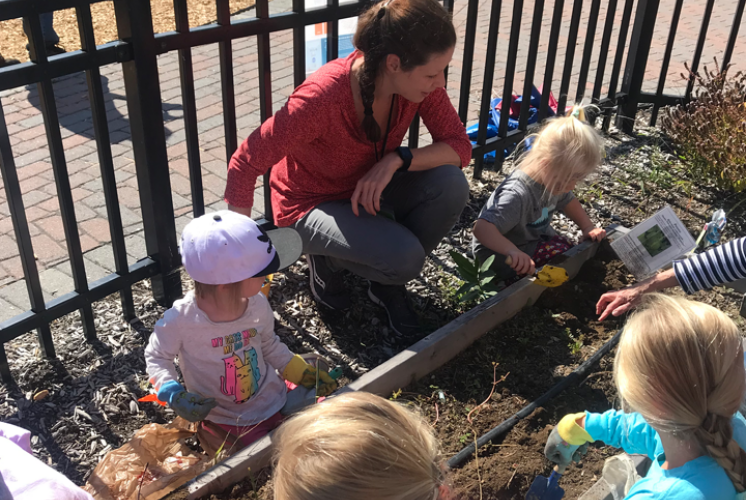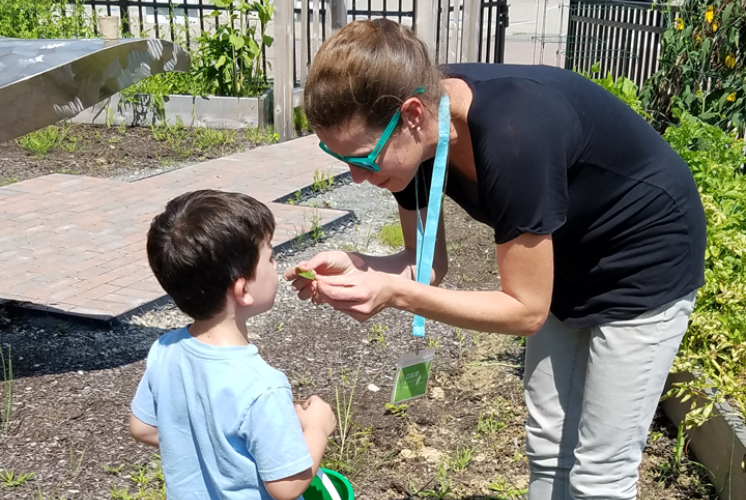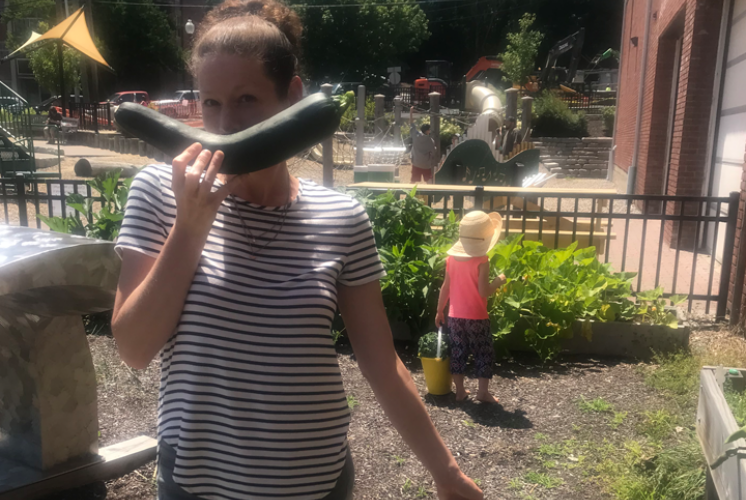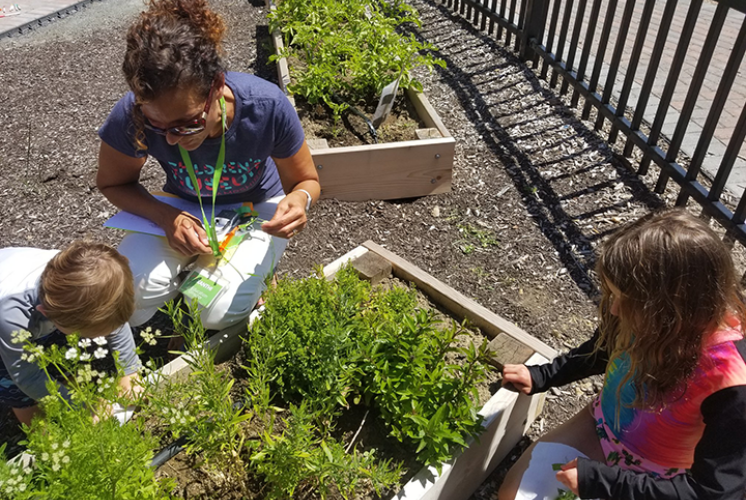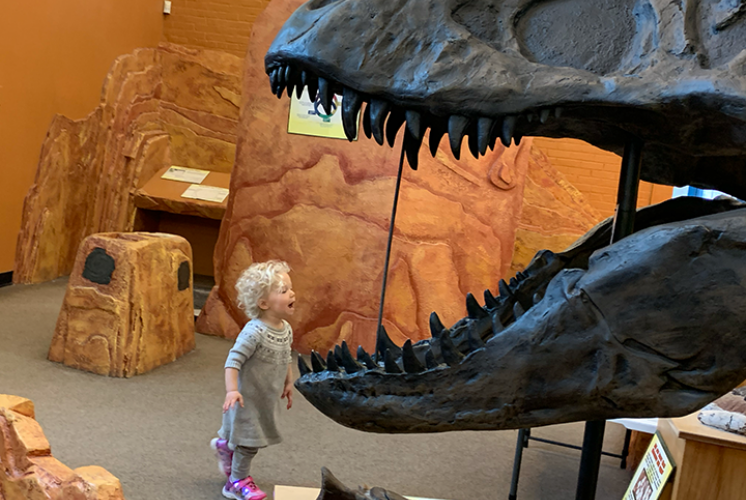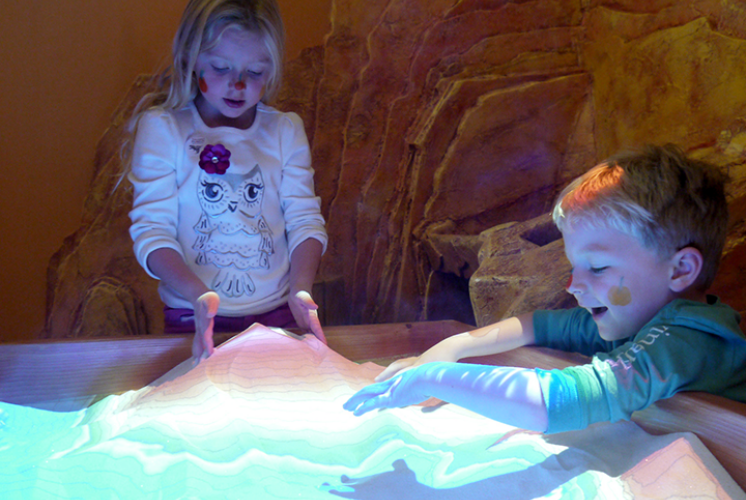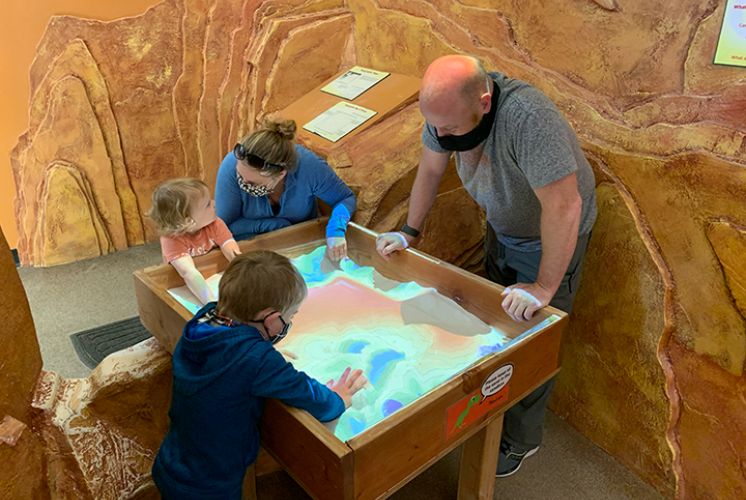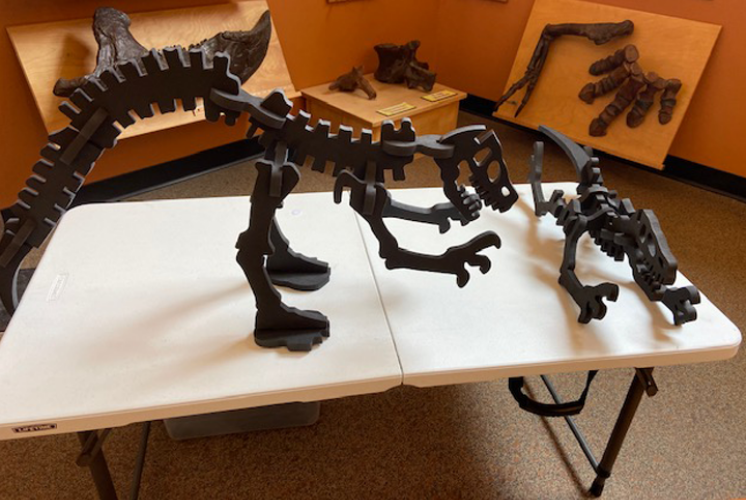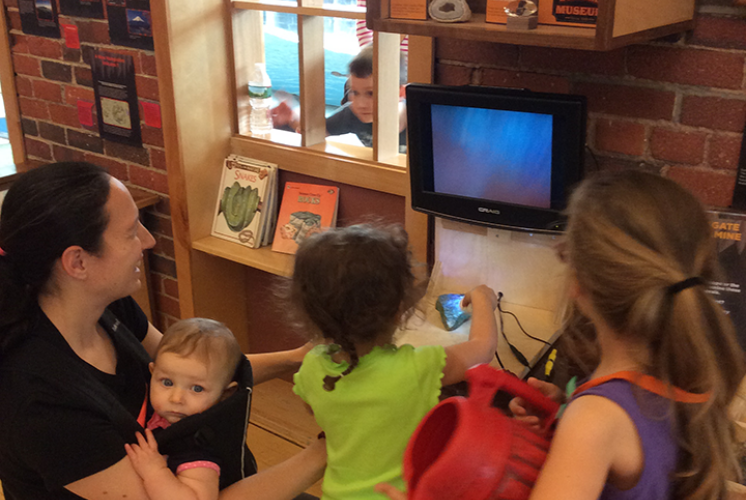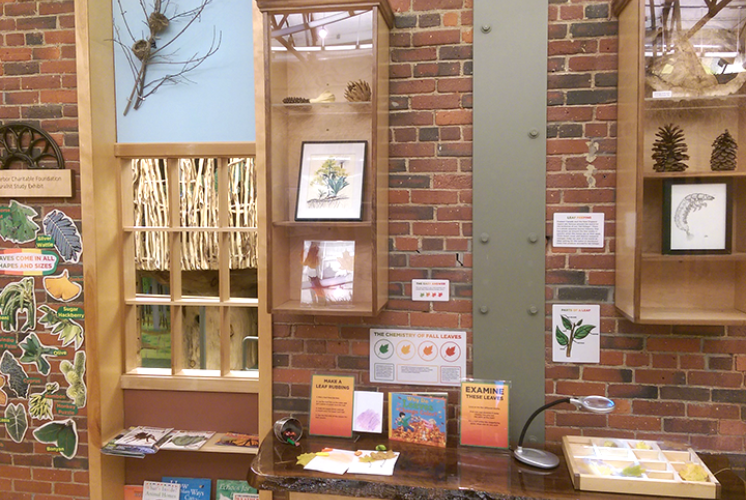Nature
Yellow Submarine
Navigate our Yellow Submarine through an underwater environment.
Identify the creatures that live here in the Gulf of Maine.
Operate the periscope to secretly search the museum above you. Identify mysterious deep-sea sounds at the listening station, and use sonar to measure your distance from approaching objects.
Take a shift at the propeller or take a break and choose a bunk.
Go for a 'swim' outside of the submarine and scare away the fish on our Motion Sensor wall.
Cave Explorers
We invite everyone to duck inside this darkened environment to explore the properties of light and dark.
Put on an explorer's vest and use your attached Cave-Light to read glow-in-the-dark books and find cave paintings. You can even draw your own glowing cave paintings!
Press the buttons in the corners to reveal more glowing surprises up high. Design your own spider web or geometric shape with our flexible Glow Rods.
Everyone has fun in the dark here!
Cochecosystem
The Cochecho River flows right through the Children's Museum of New Hampshire's backyard, so what better place to learn about it? The multi-faceted Cochecosystem exhibit explores the life of the river, both natural and industrial, as engineered by both animals and people.
COCHECOSYSTEM: INDUSTRY
Explore the water cycle and divert or dam up the "water" in our River Model. Step back to the time when Dover was a bustling center of textile manufacturing. Enter a mill environment to see how waterpower was harnessed to operate the machinery that transformed raw cotton into woven cloth. Engineer a power train, then comb cotton fibers in a carding machine, wind cotton yarn, and try your hand at a simple weaving loom.
Outside the mill, board a trolley like the ones that transported millworkers. Through photo essays of current descendants, learn more about the people who came here to work in the Cocheco Mills.
Back at the waterfront, a Piscataqua gundalow waits at the dock. This boat brought bales of raw cotton to the mills and carried bolts of newly woven cloth down the Cochecho River to Portsmouth for shipping to distant markets. Step aboard to help load and unload cargo, operate the mast and "navigate" down the river.
COCHECOSYSTEM: NATURE
Then enter a concentrated river environment to experience how animals use the river to engineer their lives. Become a tiny caddisfly in the quiet upper river as you build yourself a protective case to hide from predators. Midriver, you'll become a busy beaver as you use saplings to construct a lodge. As an osprey in the lower river, you'll put together a nest for your chicks high above the river. Then operate a fish ladder to help alewives swim upriver from the ocean to lay their eggs in the still water where they were born.
Learning Gardens
OUR "LEARNING GARDENS" PROVIDES "EDIBLE EDUCATION" FOR THE WHOLE FAMILY!
Thanks to a generous grant from the Whole Kids Foundation, the Museum's Learning Gardens have undergone lots of improvements, and our educators have been hard at work offering programming aimed at educating children about healthy food choices and the environment. When you visit the museum during growing season you may see some vegetables being offered to taste that grew from the gardens, or you may get to join a drop-in activity using something we grew or something we want to grow! The garden offers many opportunities for hands-on discovery, which is why we love having it available for our guests. The Learning Gardens are now located in the Dover Adventure Playground.
Dino Detective
BECOME A PALEONTOLOGIST!
Learn how geology affects where paleontologists dig for dinosaur remains with our Augmented Reality Sand Table. You can shape the landscape, creating rivers, mountains, dams, even making it rain or snow!
Don a pair of goggles, climb into a mountainside dig site and help unearth Triceratops fossils.
Take part in the scientific process as you compare its jaws, claws and vertebrae to those of a Tyrannosaurus Rex. Which one was a carnivore and which one was an herbivore?
Measure your thigh against life-size replica femur bones to see how big these dinosaurs were.
Make rubbings of ammonite fossils to complete your scientific investigation.
Come pose next to a life-size Tyrannosaurus Rex skull replica and see just how gigantic these creatures were!
See yourself as a Paleontologist, and dream about a Triceratops!
Naturalist's Study
The Naturalist's Study, sponsored by a generous gift from Little Harbor Charitable Foundation, is a place where children and families can examine specimens from nature and explore elements from the natural world.
The Naturalist Study features specimens and activities that will rotate throughout the year to reflect what children are seeing outside. "We frequently update The Naturalist's Study exhibit so there is always something new to experience," explained Eric Erwin, Exhibits Manager for the Children’s Museum of NH.
The Naturalist Study features a long piece of live edge black walnut, sealed and mounted as a scientist’s desk. This beautiful piece of wood was donated by Highland Hardwoods of Brentwood. On the wall above the desk are custom-made display cabinets housing delicate specimens.

